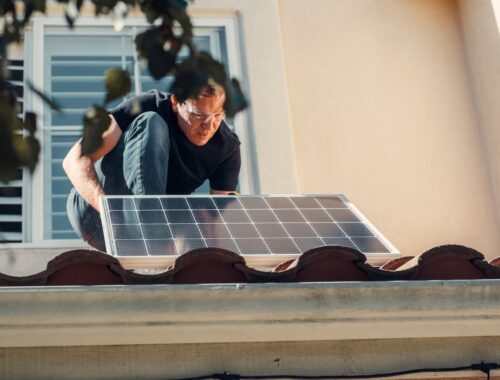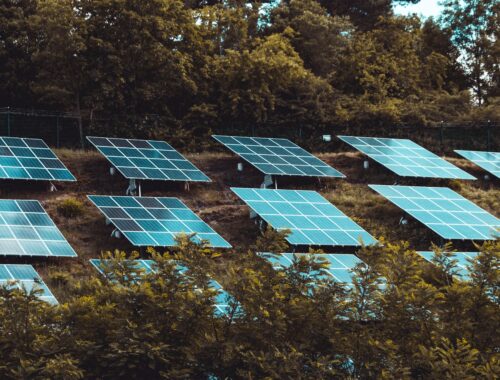
How much solar energy can a single panel produce?
The amount of solar energy that a single panel can produce depends on a number of factors, including the size of the panel, the efficiency of the panel, and the amount of sunlight that the panel receives.
Typically, a standard solar panel has dimensions of about 1.6 meters by 0.8 meters, and it can generate between 250 and 400 watts of electricity, depending on the efficiency of the panel. The efficiency of a solar panel refers to the percentage of sunlight that is converted into usable electrical energy, and it can range from 15% to 22% for standard panels.
The amount of electricity that a single panel generates can be calculated by multiplying the size of the panel by the efficiency of the panel, and by the amount of sunlight that the panel receives. For example, if a panel has an efficiency of 18% and it receives 5 hours of direct sunlight per day, it can generate approximately 135 kilowatt-hours (kWh) of electricity per year.
It is worth mentioning that the amount of electricity that a single panel generates can be affected by a number of factors, including the angle and orientation of the panel, the presence of shading or obstructions, and the weather conditions. In order to maximize the amount of electricity that a panel generates, it is important to install the panel in a location that receives the most direct sunlight possible, and to minimize the impact of shading and other obstructions.
In addition, the amount of electricity that a panel generates can vary from year to year, depending on the weather conditions. For example, in areas with significant cloud cover or snow cover, the amount of electricity that a panel generates can be lower, while in areas with high amounts of direct sunlight, the amount of electricity that a panel generates can be higher.
It is also worth mentioning that the amount of electricity that a single panel generates is just a part of the overall electricity generation of a solar energy system. In a typical solar energy system, several panels are connected together to form an array, and the overall electricity generation of the system is determined by the number of panels in the array and the amount of sunlight that they receive.
It is also important to note that the amount of electricity that a single panel generates can be affected by its age and performance. Over time, the efficiency of a solar panel may decrease, and it may generate less electricity as a result. This is why it is important to maintain and service solar panels regularly, and to replace them if necessary.
In addition, the amount of electricity that a single panel generates can be affected by the temperature of the panel. As the temperature of a panel increases, its efficiency decreases, and it generates less electricity. This is why it is important to install panels in a location that is well-ventilated and that has good air flow, and to minimize the impact of shading and other obstructions that can increase the temperature of the panel.
Another important factor that can affect the amount of electricity that a panel generates is the type of panel that is used. There are different types of solar panels, including monocrystalline, polycrystalline, and thin-film panels, and each type of panel has its own unique advantages and disadvantages. For example, monocrystalline panels are typically the most efficient, while thin-film panels are the most flexible and versatile. When selecting a panel, it is important to consider the specific needs and requirements of the application, and to choose the type of panel that best meets those needs.
In addition to the amount of electricity that a single panel generates, it is also important to consider the overall cost of a solar energy system. While the initial cost of a solar energy system can be significant, the cost of solar energy has been decreasing in recent years, and it is becoming an increasingly cost-effective and affordable source of energy. In addition, the use of solar energy can help to reduce energy bills, providing a more stable and predictable cost of energy over time.
It is also worth mentioning that the amount of electricity generated by a single panel can be affected by the technology used in the panel. For example, there are new developments in the field of solar energy, such as the use of multi-junction cells or hybrid cells, that are making it possible to generate more electricity from a single panel. These new technologies are becoming increasingly popular, and they are helping to increase the efficiency and performance of solar panels.
In addition, the use of micro-inverters or power optimizers can also affect the amount of electricity generated by a single panel. These devices are connected to each individual panel in a solar energy system, and they help to maximize the amount of electricity generated by each panel. By using micro-inverters or power optimizers, it is possible to maximize the performance of a solar energy system, and to generate more electricity from each panel.
Another important factor that can affect the amount of electricity generated by a single panel is the type of mounting system used. There are different types of mounting systems, including roof-mounted systems, ground-mounted systems, and pole-mounted systems, and each type of system has its own unique advantages and disadvantages. For example, roof-mounted systems are typically the most convenient, while ground-mounted systems can provide more stability and versatility. When selecting a mounting system, it is important to consider the specific needs and requirements of the application, and to choose the type of system that best meets those needs.
The amount of solar energy that a single panel can produce depends on a number of factors, including the size of the panel, the efficiency of the panel, and the amount of sunlight that the panel receives. On average, a standard solar panel can generate between 250 and 400 watts of electricity, and it can produce between 135 and 225 kilowatt-hours of electricity per year, depending on the conditions. By installing panels in a location that receives the most direct sunlight possible, and by minimizing the impact of shading and other obstructions, it is possible to maximize the amount of electricity that a panel generates, and to generate a significant amount of clean, renewable energy.
You May Also Like

The Role of Solar Energy in Sustainable Development
May 7, 2023
How is solar energy more effective?
March 27, 2023

